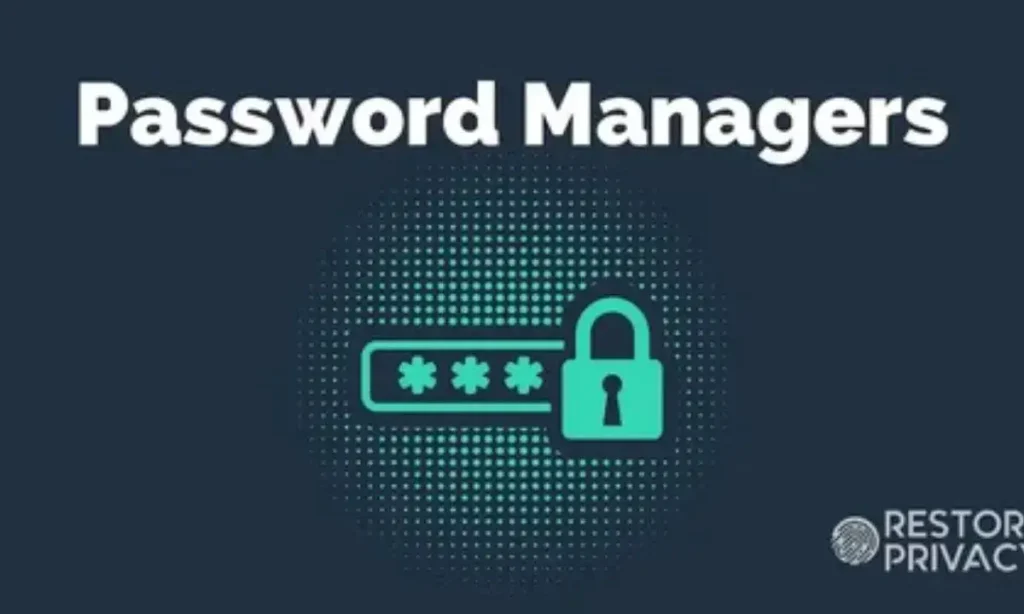In a world where almost every part of our lives happens online — from shopping and banking to streaming and working — your passwords are the keys to everything. Yet, most people still rely on simple, reused, or outdated passwords that hackers can crack in seconds. That’s where a password manager comes in — a digital tool designed to protect your login credentials, store them securely, and make online life easier.
Let’s dive deep into how password managers work, why they’re essential, and how they can completely change the way you protect your digital identity.
Table of Contents
What Is a Password Manager?
A password manager is a secure software application that stores, encrypts, and manages your passwords in one place. Instead of memorizing dozens of different passwords, you only need to remember one master password — the key that unlocks your encrypted vault.
There are two main types:
- Cloud-based password managers: Store your encrypted passwords on secure servers, allowing access across multiple devices. Examples include 1Password, LastPass, Dashlane, and Bitwarden.
- Local password managers: Keep your data stored offline on your computer or device. Examples include KeePass and Password Safe.
Each type has benefits. Cloud managers are convenient for syncing across devices, while local managers appeal to users who prefer total offline control.
Expert Insight: “A password manager doesn’t just store passwords — it transforms the way you manage your online identity by combining convenience with cryptographic strength.” — Cybersecurity expert Troy Hunt.
The Importance of Strong Passwords
Weak passwords remain one of the most common causes of data breaches. According to the Verizon 2024 Data Breach Investigations Report, over 80% of breaches involve weak or reused passwords.
Why Strong Passwords Matter
- Hackers use brute force attacks that can guess simple passwords in milliseconds.
- Reused passwords create a “domino effect.” If one account is compromised, others fall too.
- Strong passwords reduce the risk of unauthorized access, credential stuffing, and phishing.
Traits of a Strong Password
- At least 12–16 characters long
- Includes a mix of uppercase, lowercase, numbers, and symbols
- Doesn’t contain personal information
- Randomly generated (not dictionary-based)
| Password Type | Example | Time to Crack (approx.) |
|---|---|---|
| Weak (common word) | password123 | < 1 second |
| Medium (mixed case) | PassWord2024 | 3 hours |
| Strong (random) | N#5tFv@72X!r | > 100 billion years |
A password manager generates and stores these strong passwords automatically — so you don’t have to think twice.
How Password Managers Work
At their core, password managers rely on encryption to protect your information.
When you save a password, it’s encrypted locally using industry-standard algorithms like AES-256 or Argon2. The only way to decrypt your vault is with your master password, which never leaves your device.
How Encryption Works (Simplified)
- You create a master password.
- The password manager uses it to generate an encryption key.
- This key encrypts (locks) all stored passwords.
- When you log in, your key decrypts (unlocks) them locally.
Even if hackers breach a password manager’s servers, the encrypted data looks like gibberish — useless without your master key.
Did You Know? AES-256 encryption is the same technology used by banks and the U.S. government to protect classified data.
Cloud vs. Local Storage
| Feature | Cloud-Based | Local-Based |
|---|---|---|
| Access Anywhere | ✅ | ❌ |
| Offline Use | Partial | ✅ |
| Sync Across Devices | ✅ | ❌ |
| Control Over Data | Shared | Full |
| Backup Convenience | Automatic | Manual |
Features of a Good Password Manager
Not all password managers are created equal. A reliable one should offer more than just storage.
Must-Have Features
- Zero-knowledge encryption: Only you can decrypt your data.
- Cross-platform sync: Works across phones, tablets, and computers.
- Password generator: Creates strong, unique passwords automatically.
- Breach monitoring: Alerts you if your credentials appear in data leaks.
- Two-factor authentication (2FA): Adds a second security layer.
- Emergency access: Allows trusted contacts to recover access if needed.
| Password Manager | Zero-Knowledge | Sync Devices | Breach Alerts | 2FA Support | Free Version |
|---|---|---|---|---|---|
| Bitwarden | ✅ | ✅ | ✅ | ✅ | ✅ |
| 1Password | ✅ | ✅ | ✅ | ✅ | ❌ |
| Dashlane | ✅ | ✅ | ✅ | ✅ | ✅ |
| Keeper | ✅ | ✅ | ✅ | ✅ | ❌ |
| LastPass | ✅ | ✅ | ✅ | ✅ | ✅ |
Setting Up Your Password Manager
Setting up a password manager is simple, but it requires a few careful steps.
Step-by-Step Setup
- Choose a provider (Bitwarden, 1Password, Dashlane, etc.).
- Create a strong master password.
- Install the browser extension and mobile app.
- Import passwords from your browser or CSV file.
- Enable 2FA for your vault.
- Back up recovery keys or print them for safekeeping.
Pro Tip:
Use a passphrase instead of a single word — something like BlueRain@SunsetRocks! is easier to remember and far more secure.
Using a Password Manager in Daily Life
Once set up, a password manager integrates seamlessly into your digital routine.
- Autofill logins: Save time on frequent sites like Gmail or Netflix.
- Generate passwords instantly: When signing up for new accounts.
- Sync across devices: Your phone, tablet, and PC always stay updated.
- Audit passwords: Find and replace weak or reused credentials.
You’ll quickly notice reduced password fatigue — that mental strain from managing countless passwords.
Personal Experience: Embracing Password Managers
Before switching to a password manager, I juggled around 70 passwords — some scribbled in notebooks, others stored insecurely in my browser. Switching to Bitwarden simplified everything.
Now, I have one master key, automatic logins, and instant access to my vault across devices. I no longer stress about forgetting a password or reusing one. The peace of mind alone is worth it.
Password Managers and Two-Factor Authentication
Two-Factor Authentication (2FA) adds another layer of defense beyond your password.
Password managers integrate with 2FA apps or even include their own built-in authenticators. For example, 1Password can generate one-time codes directly inside your vault.
| 2FA Type | Example | Security Level |
|---|---|---|
| SMS-based | Code via text | Medium |
| App-based | Google Authenticator | High |
| Hardware | YubiKey | Very High |
Combining a password manager + 2FA drastically reduces your chances of being hacked.
Password Managers and Digital Identity Protection
A password manager isn’t just about passwords — it’s about safeguarding your entire digital identity.
How They Protect You
- Prevent phishing attacks by auto-filling only on verified domains.
- Guard against credential stuffing by ensuring every account has a unique password.
- Offer dark web monitoring to detect compromised credentials early.
Case Study:
In 2023, a Bitwarden user discovered through breach alerts that one of their old shopping accounts was compromised. The password manager prompted an immediate password change — preventing further damage.
The Security of Password Managers
Many people worry, “What if my password manager gets hacked?” It’s a fair concern — but let’s separate fact from fear.
Security Principles
- Zero-knowledge architecture: Your provider cannot see your passwords.
- Local encryption: Data is encrypted before leaving your device.
- Master password control: You are the only person who can decrypt your data.
- Independent audits: Reputable password managers undergo third-party security reviews.
Even when LastPass experienced a breach in 2022, encrypted vaults remained safe because of zero-knowledge encryption — proving the resilience of the system.
Common Misconceptions About Password Managers
Myth 1: “If the password manager is hacked, I lose everything.”
Truth: Vaults are encrypted with your master key; without it, they’re useless.
Myth 2: “Browsers are safe enough.”
Truth: Browser password storage lacks advanced encryption and audit tools.
Myth 3: “Password managers are complicated.”
Truth: Most modern tools are intuitive and guide you through every step.
Myth 4: “I’ll forget my master password.”
Truth: Use a memorable passphrase and backup recovery keys — problem solved.
Choosing the Right Password Manager for You
When choosing a password manager, consider your needs and devices.
Key Factors
- Compatibility: Works with all your devices.
- Security features: Zero-knowledge, encryption type, and 2FA.
- Ease of use: Simple setup and intuitive interface.
- Cost: Free vs premium features.
- Transparency: Open-source code and regular audits.
| User Type | Recommended Manager | Notable Feature |
|---|---|---|
| Individual | Bitwarden | Free & open-source |
| Family | 1Password | Shared vaults |
| Business | Keeper | Admin control panel |
| Advanced user | KeePass | Offline storage |
Integrating Password Managers with Other Security Tools
For full digital safety, pair your password manager with:
- VPN: Encrypts internet traffic to protect logins on public Wi-Fi.
- Antivirus software: Detects keyloggers and malware.
- Firewall: Blocks unauthorized access.
A password manager fits neatly into your cyber hygiene ecosystem, enhancing every layer of defense.
Password Managers and Family Use
Families today manage dozens of shared accounts — streaming services, school portals, and utilities. Password managers simplify this chaos.
Benefits
- Shared vaults for joint accounts.
- Parental control and password oversight.
- Emergency access options for older or younger family members.
Tip: Use 1Password Families or Dashlane Family Plan for secure sharing and centralized billing.
Addressing the Fear of Losing Access
Losing access to your vault sounds scary, but there are safeguards.
- Recovery keys: Unique codes that restore access.
- Emergency contacts: Trusted users who can request access after verification.
- Offline backups: Export encrypted copies for safekeeping.
- Password inheritance: Pass digital assets securely to loved ones.
Most managers allow you to set this up within minutes — ensuring you’ll never be locked out.
Moving Beyond Passwords: The Future of Authentication
The world is moving toward passwordless authentication — think biometrics and passkeys.
Emerging Technologies
- Passkeys: Secure tokens stored on your device using FIDO2 standards.
- Biometric authentication: Fingerprints or facial recognition for identity verification.
- Hardware security keys: Physical USB devices like YubiKey.
Password managers are evolving too, already integrating passkey support for seamless, password-free logins.
My Journey with Password Managers
I’ve used several password managers over the years — from KeePass to 1Password — and each improved how I manage digital life. The biggest change? Confidence. I no longer fear forgetting passwords or falling for phishing scams. It’s a small tool with massive impact.
Conclusion
In today’s hyper-connected world, securing your online accounts is not optional — it’s essential. A password manager protects your passwords, simplifies your logins, and shields your digital identity from evolving cyber threats.
If you haven’t tried one yet, start today. Try Bitwarden or 1Password, create your first strong password, and take control of your online safety. It’s one of the smartest moves you can make for your digital future.
Keywords naturally used: password manager, password managers, strong password, master password, encryption, AES-256, two-factor authentication, digital identity protection, passwordless authentication, online security, data breach, cybersecurity, VPN, antivirus software, passkeys, password generator, secure password storage.
Would you like me to add internal and external hyperlinks (e.g., links to official provider sites and trusted cybersecurity references like NIST or CISA) to make it SEO-ready for publishing?



